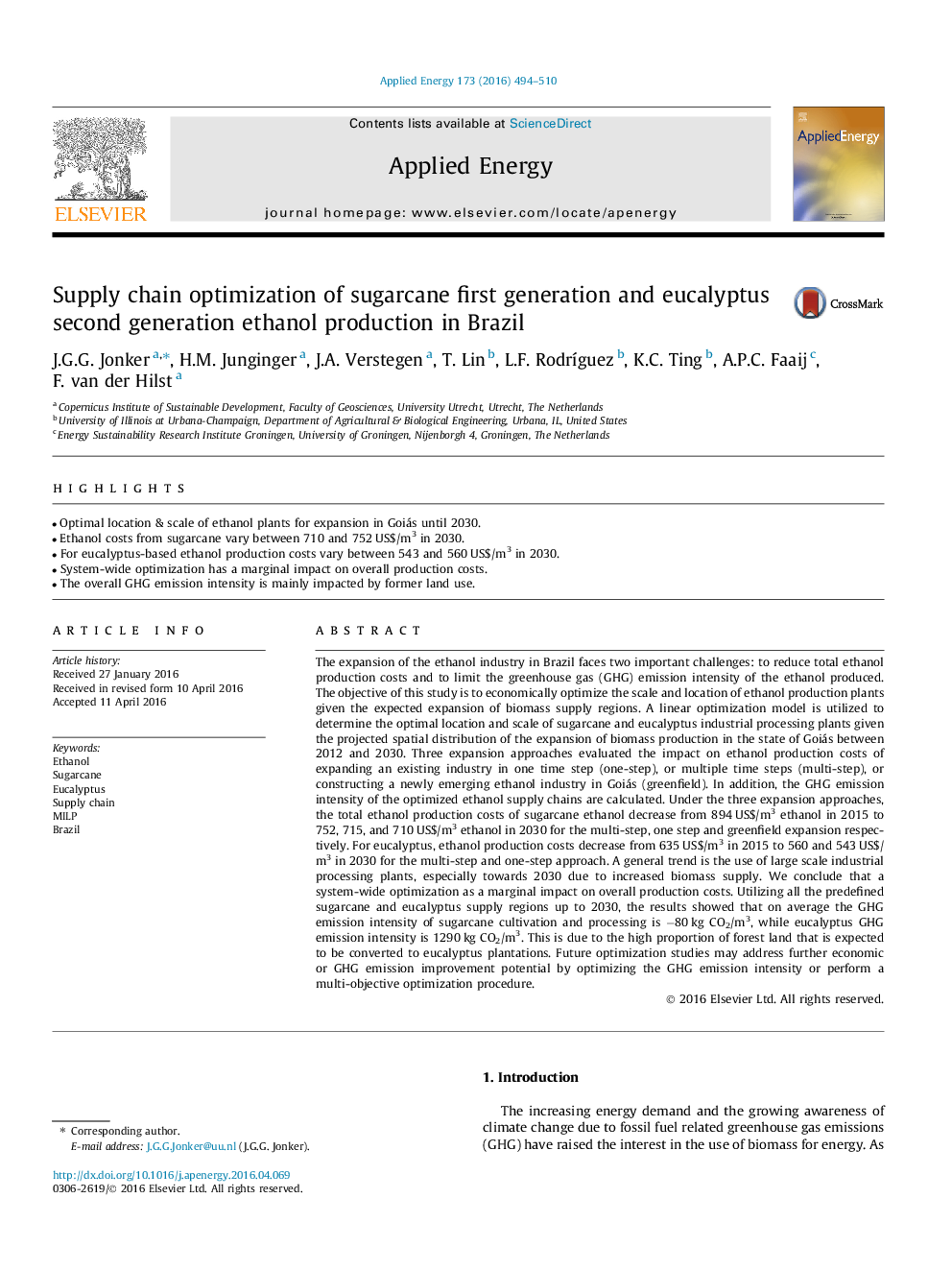| کد مقاله | کد نشریه | سال انتشار | مقاله انگلیسی | نسخه تمام متن |
|---|---|---|---|---|
| 6683196 | 501853 | 2016 | 17 صفحه PDF | دانلود رایگان |
عنوان انگلیسی مقاله ISI
Supply chain optimization of sugarcane first generation and eucalyptus second generation ethanol production in Brazil
ترجمه فارسی عنوان
بهینه سازی زنجیره تامین نسل اول نسل نیشکر و نسل دوم تولید اتانول اکالیپتوس در برزیل
دانلود مقاله + سفارش ترجمه
دانلود مقاله ISI انگلیسی
رایگان برای ایرانیان
کلمات کلیدی
موضوعات مرتبط
مهندسی و علوم پایه
مهندسی انرژی
مهندسی انرژی و فناوری های برق
چکیده انگلیسی
The expansion of the ethanol industry in Brazil faces two important challenges: to reduce total ethanol production costs and to limit the greenhouse gas (GHG) emission intensity of the ethanol produced. The objective of this study is to economically optimize the scale and location of ethanol production plants given the expected expansion of biomass supply regions. A linear optimization model is utilized to determine the optimal location and scale of sugarcane and eucalyptus industrial processing plants given the projected spatial distribution of the expansion of biomass production in the state of Goiás between 2012 and 2030. Three expansion approaches evaluated the impact on ethanol production costs of expanding an existing industry in one time step (one-step), or multiple time steps (multi-step), or constructing a newly emerging ethanol industry in Goiás (greenfield). In addition, the GHG emission intensity of the optimized ethanol supply chains are calculated. Under the three expansion approaches, the total ethanol production costs of sugarcane ethanol decrease from 894Â US$/m3 ethanol in 2015 to 752, 715, and 710Â US$/m3 ethanol in 2030 for the multi-step, one step and greenfield expansion respectively. For eucalyptus, ethanol production costs decrease from 635Â US$/m3 in 2015 to 560 and 543Â US$/m3 in 2030 for the multi-step and one-step approach. A general trend is the use of large scale industrial processing plants, especially towards 2030 due to increased biomass supply. We conclude that a system-wide optimization as a marginal impact on overall production costs. Utilizing all the predefined sugarcane and eucalyptus supply regions up to 2030, the results showed that on average the GHG emission intensity of sugarcane cultivation and processing is â80Â kg CO2/m3, while eucalyptus GHG emission intensity is 1290Â kg CO2/m3. This is due to the high proportion of forest land that is expected to be converted to eucalyptus plantations. Future optimization studies may address further economic or GHG emission improvement potential by optimizing the GHG emission intensity or perform a multi-objective optimization procedure.
ناشر
Database: Elsevier - ScienceDirect (ساینس دایرکت)
Journal: Applied Energy - Volume 173, 1 July 2016, Pages 494-510
Journal: Applied Energy - Volume 173, 1 July 2016, Pages 494-510
نویسندگان
J.G.G. Jonker, H.M. Junginger, J.A. Verstegen, T. Lin, L.F. RodrÃguez, K.C. Ting, A.P.C. Faaij, F. van der Hilst,
